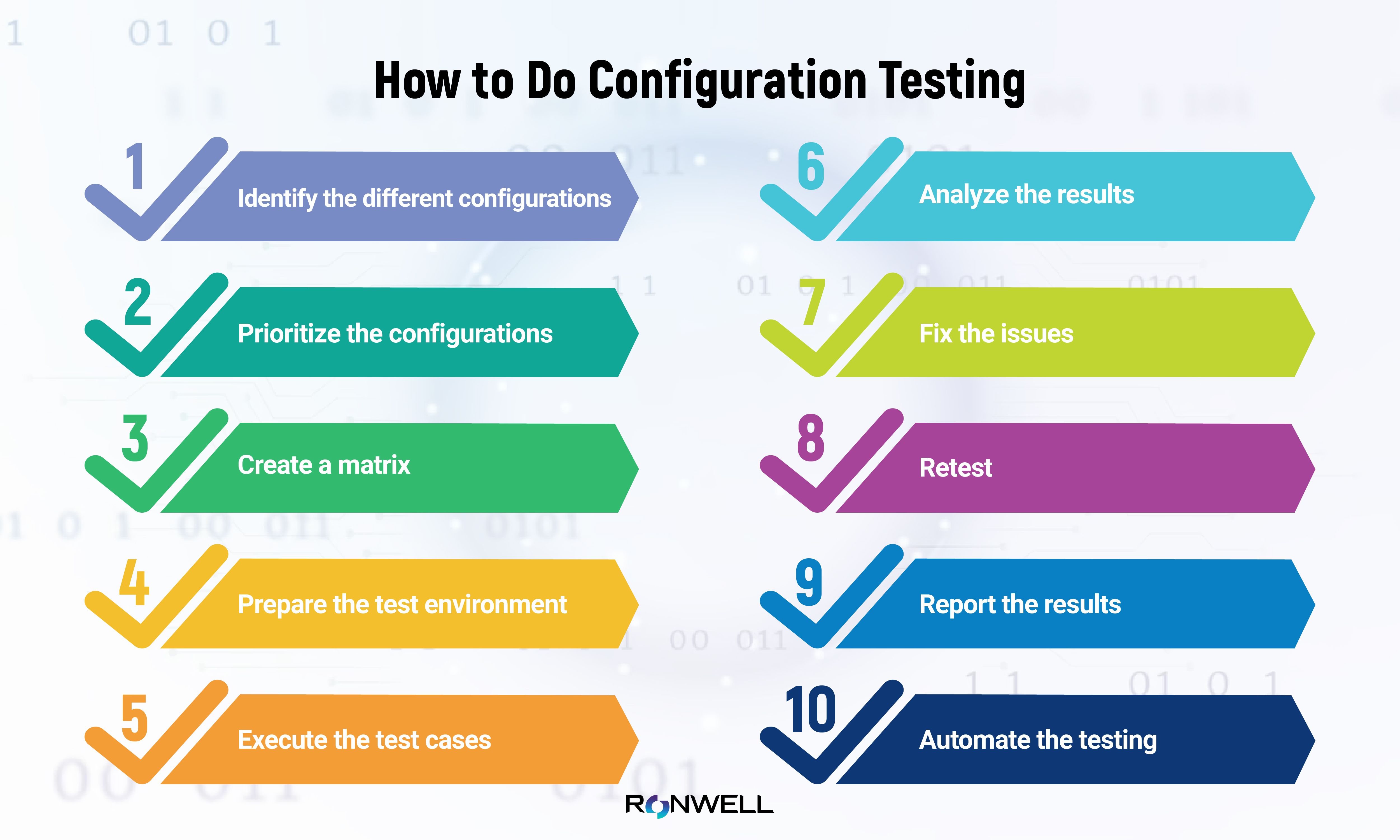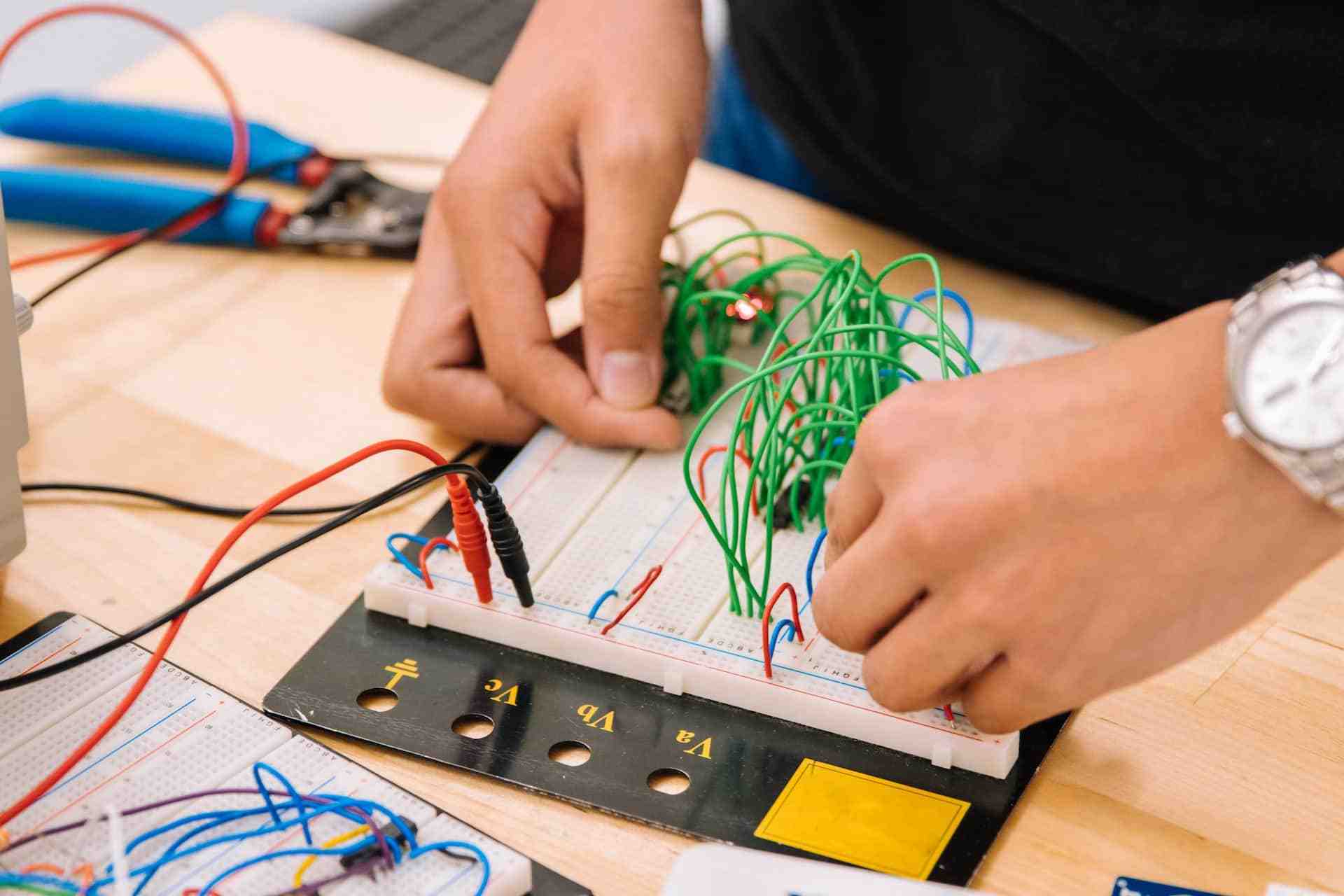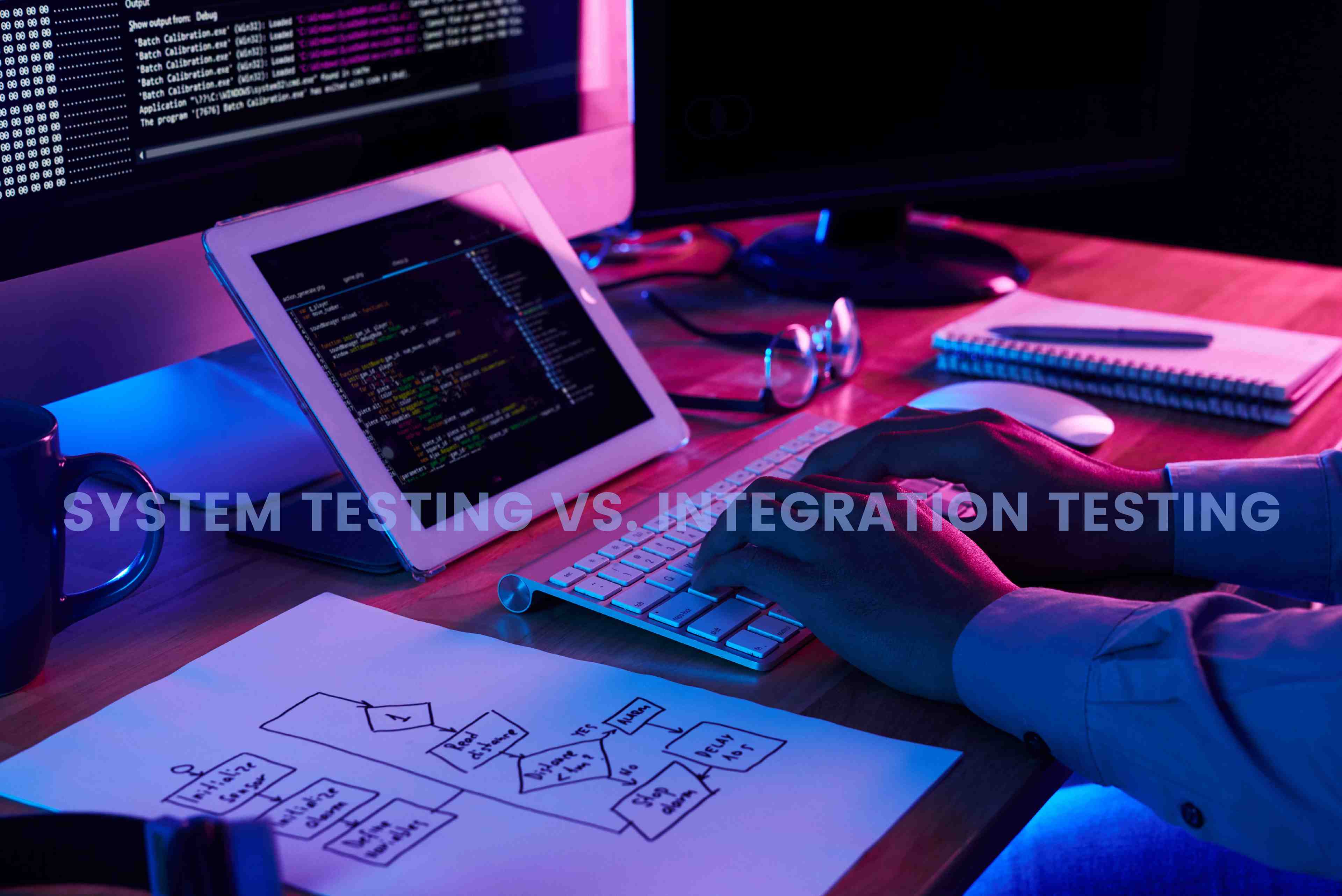

Our Services
Test Automation ServicesAI & Machine LearningBlockchainCRM ConsultingData Science & EngineeringDevOpsDigital MarketingDigital TransformationEmbedded Software DevelopmentERP Consulting ServicesManaged IT ServicesMergers & Acquisitions AdvisoryQA And Testing ServicesRobotic Process Automation SAP Consulting DevelopmentSoftware and Application DevelopmentSQL ConsultingStrategy ConsultingSustainability
- Contact Us
Our Services
- Test Automation Services
- AI & Machine Learning
- Blockchain
- CRM Consulting
- Data Science & Engineering
- DevOps
- Digital Marketing
- Digital Transformation
- Embedded Software Development
- ERP Consulting Services
- Managed IT Services
- Mergers & Acquisitions Advisory
- QA And Testing Services
- Robotic Process Automation
- SAP Consulting Development
- Software and Application Development
- SQL Consulting
- Strategy Consulting
- Sustainability
Insight
Company
Industries
- Contact Us

Configuration Testing in Software and Everything About It
Explore the world of configuration testing in software development, from its definition and importance to types, examples, objectives, challenges, best practices.
- insight
- /
- blog
- /
- configuration-testing
Configuration testing is an essential part of software testing that ensures a software application can function reliably and consistently across different configurations. This type of testing involves verifying that an application runs correctly across various operating systems, hardware platforms, network environments, and other settings.
Testing configuration helps to reduce the risk of software failures, improve the user experience, and enhance overall software quality.
This blog article will explore the definition of configuration testing, its importance, types, objectives, and best practices for conducting configuration testing. We will also discuss some challenges during configuration testing and provide examples of sample test cases and the benefits of configuration testing.
If you want to read our test case for login page!
If you have prepared your coffee, as it will be a long article, let's get started with the configuration testing definition.
Highlights
- Configuration testing is essential to ensure software runs correctly across different configurations.
- It involves testing an application on various operating systems, hardware platforms, and network environments.
- Configuration testing helps reduce the risk of software failures and enhances overall software quality.
- The process can be divided into software and hardware configuration testing, as well as client and server-level testing.
- Objectives include validating the application's configuration, detecting problems, and analyzing system efficiency.

What is Configuration Testing?
Configuration testing is a way to test a system that is still being built on various machines that have different sets of hardware and software configurations. Each hardware and software setup a system or a program supports is used to test how well it works.
When we talk about different combinations of hardware and software, we mean different versions of operating systems, browsers, drivers, memory sizes, hard drive types, CPUs, and so on.
What is Configuration Testing in Software Testing?
It is a type of software configuration testing that focuses on verifying that a software application works correctly under various configurations. Testing configuration ensures that the software behaves consistently across different operating systems, hardware platforms, network environments, and other configurations the software may encounter in the real world.
Software configuration testing is importantl because software applications are often used in different environments, and the software must function correctly in all of these environments. The configurations can vary in terms of hardware specifications, operating systems, network configurations, and other software installed on the system.
To perform configuration testing, testers need to identify the various configurations that the software will encounter in the real world. They can then create a matrix of the different configurations and test cases that need to be executed for each configuration. Testers will execute the test cases and verify that the software behaves correctly under each configuration.
Testing can be challenging due to the extensive range of configurations that require testing. Testers need to carefully plan and prioritize the configurations and test cases to ensure that the most critical configurations are tested first. Automated testing tools can be helpful in executing the test cases across different configurations.
To learn more about automated testing tools, read our article.
Why is Configuration Testing Important?
Configuration testing is important for ensuring software applications function accurately across various environments. As software is used across different operating systems, hardware platforms, and network environments, it must function correctly in all these settings.
Testing configuration guarantees that the software behaves consistently across all configurations, allowing testers to identify and resolve any issues. This results in improved software reliability and performance, minimizing the risk of software failures and enhancing user experience.
So, configuration testing helps to ensure software quality and customer satisfaction.
Types of Configuration Testing
The process of Configuration Testing can be divided into two main categories:
- Software Configuration Testing
- Hardware Configuration Testing
Software Configuration Testing involves testing an Application Under Test (AUT) on multiple operating systems and browser versions. This testing requires a lot of time for setup, including software installation and uninstallation. It typically starts after Unit Testing and Integration Testing are complete.
Unit Testing vs Functional Testing Comparison ?
Hardware Configuration Testing involves testing physical machines in a laboratory environment with various connections. This testing is used to verify that the application is functioning correctly on the physical machines and connections.
Configuration Testing can also be divided into two types:
- Client Level Testing
- Server Level Testing
Client Level Testing is focused on testing the usability and functionality of the application from the client or user's perspective. Server Level Testing, on the other hand, tests the communication between the software and the external environment after a release to ensure that integration is working correctly.
Objectives of Configuration Testing
The objectives of Configuration Testing include validating the application's configuration, detecting problems, determining the best system setup, analyzing system efficiency, verifying geographically dispersed environments, ensuring traceability, and managing application components throughout the software development lifecycle.
- To ensure that the application is functioning correctly and meeting the requirements for configuration.
- To detect and address problems that may not be readily apparent during testing, such as manually producing failures or changing system settings.
- To determine the best setup for the test application, including adding or altering hardware resources to analyze system performance.
- To analyze system efficiency based on prioritizing, determining how effectively tests were carried out, and obtaining the best system configuration.
- To verify the system in a geographically dispersed environment to determine how well it functions regardless of setup changes.
- To ensure that problems can be readily reproduced regardless of setup changes.
- To document and keep clearly recognizable versions of application components to ensure their traceability.
- To determine how manageable the application components are throughout the software development life cycle.
How to Do Configuration Testing
Here are the steps involved in performing configuration testing:
Identify the different configurations: Identify the various hardware, software, and network configurations that the software may encounter in the real world.
Prioritize the configurations: Prioritize the configurations based on their importance and likelihood of usage.
Create a matrix: Create a matrix of the different configurations and test cases that need to be executed for each configuration.
Prepare the test environment: Prepare the test environment to match the different configurations, including hardware, operating systems, network settings, and other software installed.
Execute the test cases: Execute the test cases for each configuration and document the results. To learn how to create test cases, read our blog.
Analyze the results: Analyze the test results to identify any issues or defects that need to be addressed.
Fix the issues: Fix the issues found during testing and verify the fixes.
Retest: Retest software to ensure the fixes did not introduce new issues.
Report the results: Report the test results to stakeholders and provide recommendations for further improvements.
Automate the testing: Automate the configuration testing process using configuration testing tools to save time and increase accuracy.
You can ensure the software behaves consistently across different configurations and meets the needs of end-users in different environments.
Sample Test Cases Configuration Testing
Here we have listed some configuration testing example:
- Verify that the application is connected perfectly with the machine model, assuming all necessary prerequisites are installed.
- Confirm that the application runs as expected with the machine model when prerequisites are installed.
- Test the behavior of the application with the machine model when prerequisites are not installed.
- Ensure that the machine detects the numbers entered in the application system.
- Verify that the application calculates correctly based on the input.
- Test that the machine accepts the count from the application system.
- Confirm that the machine calculates correctly based on the input.
- Verify that the machine's counting behavior matches the actual cash amount.
These test cases involve verifying the interaction between hardware and software configurations to ensure the software behaves correctly in different environments. By testing the software in different configurations, testers can identify and address any issues, ensuring that the software is reliable and functions as expected in real-world scenarios.
Benefits of Configuration Testing
We have talked about the importance of it and given you a configuration testing example; now it is time to list the benefits of configuration testing.
- Improved software reliability: Configuration testing helps software works consistently across different environments, which can help identify and resolve potential issues, ultimately leading to improved reliability.
- Enhanced user experience: Configuration testing ensures that software works correctly in different configurations, which helps to enhance the user experience and meet end-users needs in various environments.
- Reduced risk of software failures: It helps identify and address issues before software is released, minimizing the risk of software failures and their associated costs.
- Improved software quality: By testing software in different configurations, testers can identify and resolve issues, resulting in higher-quality software that meets end-users' expectations.
- Increased customer satisfaction: Configuration testing helps to ensure that software works correctly and reliably in various environments, leading to increased customer satisfaction and loyalty.
If you are curious about the benefits of outsourcing software testing services, you can check out our blog post.
Best Practices for Configuration Testing
We have covered some best practices for configuration testing.
- Define testing objectives and scope: Clearly define the testing objectives before beginning configuration testing to ensure that all the necessary configurations are tested.
- Develop a comprehensive test plan: Create a comprehensive test plan that includes all the necessary configurations, environments, and test cases. The plan should cover all the different scenarios that may arise during testing. Check out our comprehensive blog to learn how to create a test plan.
- Test in a controlled environment: Test in a controlled environment that is very similar to the production environment. This will make sure that the test results are a good reflection of how the software will work in the real world.
- Automate testing wherever possible: Automate configuration testing wherever possible to reduce manual errors and increase testing efficiency.
- Use real-world data: Use real-world data to test the software in various configurations and ensure that the software can handle all scenarios.
- Document all test results and issues: Document all test results and issues systematically to ensure that they are easy to track and address.
- Involve stakeholders: Involve all stakeholders in the testing process, including developers, testers, and end-users, to ensure everyone understands the testing objectives and is aligned with the testing approach.
Challenges with Configuration Testing
Configuration testing can present challenges as it is a complex and resource-intensive procedure that necessitates careful planning and execution to achieve accurate and dependable outcomes. Here are some challenges with configuration testing.
- Configuration testing can be complex, especially when testing a software application that interacts with multiple hardware components and operating systems.
- Limited resources, such as hardware and software, can make it challenging to test all the necessary configurations.
- Users may use the software in unpredictable environments, which can make it challenging to anticipate all potential issues.
- Configuration testing can be time-consuming, especially when testing an extensive number of configurations.
- Testers may lack the expertise required to test all configurations accurately, leading to inaccurate results.
- Incomplete or inaccurate documentation of configurations can make it difficult to conduct thorough testing.
- Reproducing issues in specific configurations can be challenging, making it difficult to identify and address them.
Configuration Testing with Ronwell Digital
Ronwell Digital offers a range of configuration testing services, including defining testing objectives and scope, developing a comprehensive test plan, testing in a controlled environment, automating testing wherever possible, using real-world data, documenting all test results and issues, and involving all stakeholders in the testing process.
Configuration testing can present various challenges, such as limited resources, unpredictability of user environments, and difficulty reproducing issues. But Ronwell is equipped with the expertise and resources needed to conduct thorough and accurate configuration testing, helping to ensure that software applications are reliable, high-quality, and meet user expectations.
Need configuration testing services? Contact us now!
References
Geeks for Geeks - Configuration Testing
Writer:

Halime Yılmaz
Content Marketing Specialist
8 min read
27 April 2023, Thursday
Related Posts
Related Industries
Related Services
















